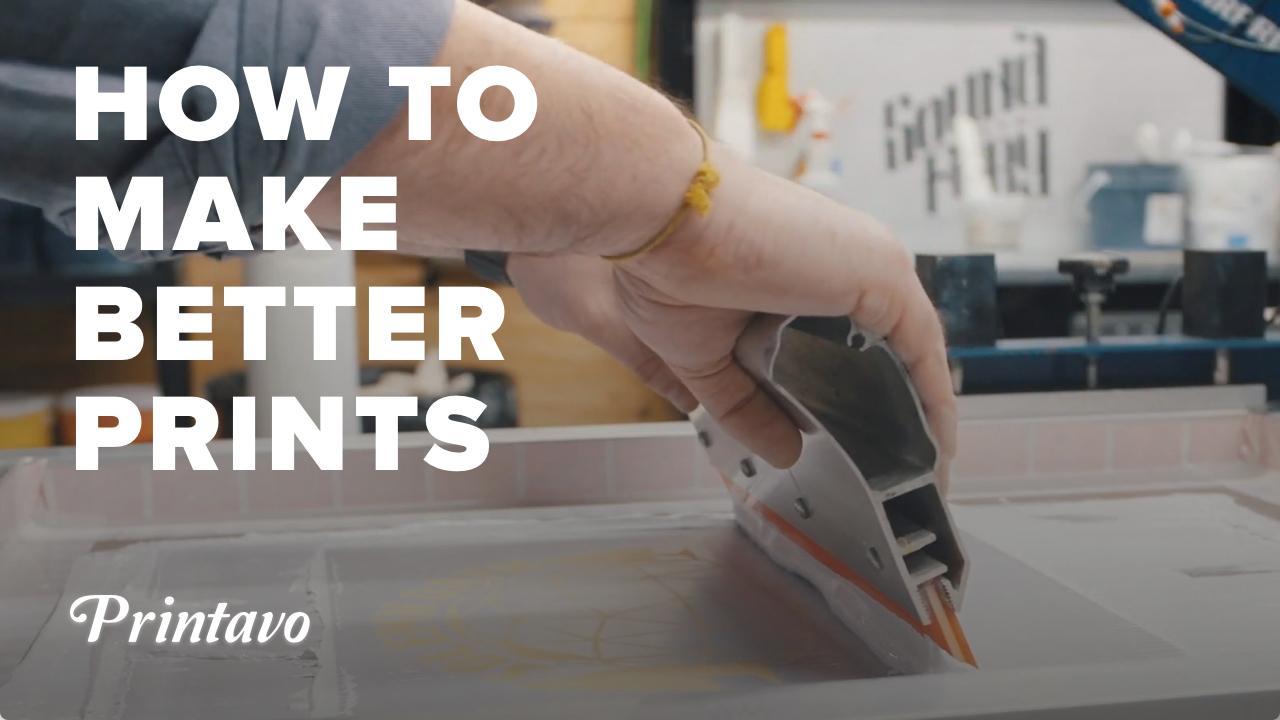The 45-Second Trick For Tx Tees
Table of ContentsUnknown Facts About Tx TeesOur Tx Tees PDFsNot known Facts About Tx TeesTx Tees - An OverviewSome Known Questions About Tx Tees.All about Tx TeesThe Best Strategy To Use For Tx Tees
Include up other costs, like the number of energies it takes to run the store and the price of ink and solution per design. Take the print listed below.The solution should only be a few cents given that you 'd only need to coat one display for this work. So just how much should you charge per tee shirt to earn a profit? Usually, printers attempt to make up to 45% profit on a print job. Right here's a table to aid you determine that: total expense per product percent of preferred revenue as a decimal (instance:.25 or.45) earnings made per thing per work Now allowed's speak about the profitability of DTF.

With DTF, you can publish a handful of tee shirts, or just one. Use the very same calculator as the area above to calculate just how much earnings you would certainly use DTF transfers. Contrast the expenses and profits to whichever method talks best to your setup and procedure. Both screen printing and DTF have their niches worldwide.
Little Known Questions About Tx Tees.
The most effective means to know? Ask about and see what print shops like your own are doing. embroidery shop. Attempt both out and see which you like better
When you're selecting what kind of printing method to use for printing your art work layouts on your garments, it's essential that you understand the distinctions in between these 2 techniques so you can make best use of outcomes while minimizing expenses. Screen printing is one of the most generally made use of technique for printing layouts on fabrics.
DTG printing is additionally called spot or direct to garment printing because it prints only what is needed rather than making a screen as display printers do. https://www.mixcloud.com/txtees02/. Display printing functions by display filler squeegee screen printing ink display mesh screen, after that transferring the photo to garment utilizing heat and/or pressure
The DTG printer uses special dye-sublimation inks that are used into a pre-designed photo by a digital printing system. The inks come to be part of the textile, allowing for vivid colors and phenomenal detail. It's additionally called place or direct to garment printing since it prints just what is needed rather of making a display as screen printers do.
A Biased View of Tx Tees
It's much faster - you can publish a fullcolor picture in mins, as opposed to hours for screen printing. Second, there's no set up time or expenses entailed - you can print any layout you like, without having to produce a display. Third, there's no waste - because screen printers display print one style at once, they need to screen each color individually.
The paper is extremely expensive and can only be used when. Once it's published on, it has actually to be disposed of. - The first purchase cost is less than the ahead of time financial investment of DTG printers- You can publish multi-color styles one screen at a time as opposed to needing to publish each shade individually like DTG printing.

Tx Tees for Dummies
However, rather than making use of screen mesh as screen printers do, color sublimation printers use laser innovation to move your photos onto garments or paper. A heat process moves the color from its solid-state straight into the gas phase which consequently integrates it onto fabric substrates when they are quickly warmed to high temperatures under high pressure.
Sublimation printing is green. It uses less water than screenprinting, and since it doesn't include the usage of harmful solvents, it's safe for all types of clothing. The dye sublimation inks are likewise unsmelling when healed, unlike display printers that use hazardous visit their website chemicals during the screen printing process that leave behind an unpleasant odor.
They also save money on costly equipment like exposure systems considering that color sublimation printers do not need a UV exposure system or a flash remedy stove that is usually utilized in screen printing (t-shirt printing). What is direct to garment printing (DTG Printing)? DTG printing is a digital screenprinting process that publishes straight onto textile making use of specialized inkjet printers
Little Known Facts About Tx Tees.
DTG printing offers several advantages over conventional screenprinting, consisting of the capability to print photo high quality images, better color vibrancy, and the ability to publish designs on darker textiles. DTG printers work by heating the fabric ink until it becomes a gas. The gas after that permeates the fabric, bonding with the fibers to produce a permanent print.

Display printers just prepare their screen then start publishing till they lack item or ink.- There is a vast array of knowledgeable display printers around the world, which can be useful for beginners. - It's a slower process - display printers usually need to wait on the ink to dry before they can publish the following color- Screen printers call for hand-operated labor, so there's a greater learning contour and it takes longer to generate a high-grade layout- Screen printing isn't as accurate as DTG printing, so you might get some "bleeding" of shades from one component of the image onto another otherwise done appropriately.
How Tx Tees can Save You Time, Stress, and Money.
Rather of using display mesh as display printers do, dye sublimation printers utilize laser technology to transfer your photos onto garments or paper. A heat procedure transfers the dye from its solid-state straight into the gas phase which subsequently fuses it onto material substratums when they are rapidly heated up to heats under high stress.
Sublimation printing is environmentally friendly. It utilizes less water than screenprinting, and due to the fact that it doesn't entail making use of harmful solvents, it's secure for all sorts of apparel. The color sublimation inks are likewise odor-free when healed, unlike screen printers that make use of damaging chemicals throughout the display printing process that leave behind an undesirable smell.
They also save money on expensive tools like exposure units considering that color sublimation printers do not require a UV exposure unit or a flash remedy oven that is commonly made use of in screen printing. What is direct to garment printing (DTG Printing)? DTG printing is a digital screenprinting process that prints directly onto material utilizing specialized inkjet printers.
Little Known Facts About Tx Tees.
DTG printing uses lots of benefits over conventional screenprinting, including the ability to publish photo high quality pictures, greater shade vibrancy, and the capacity to print designs on darker fabrics. DTG printers function by heating up the textile ink until it develops into a gas. The gas then penetrates the material, bonding with the fibers to create a permanent print.